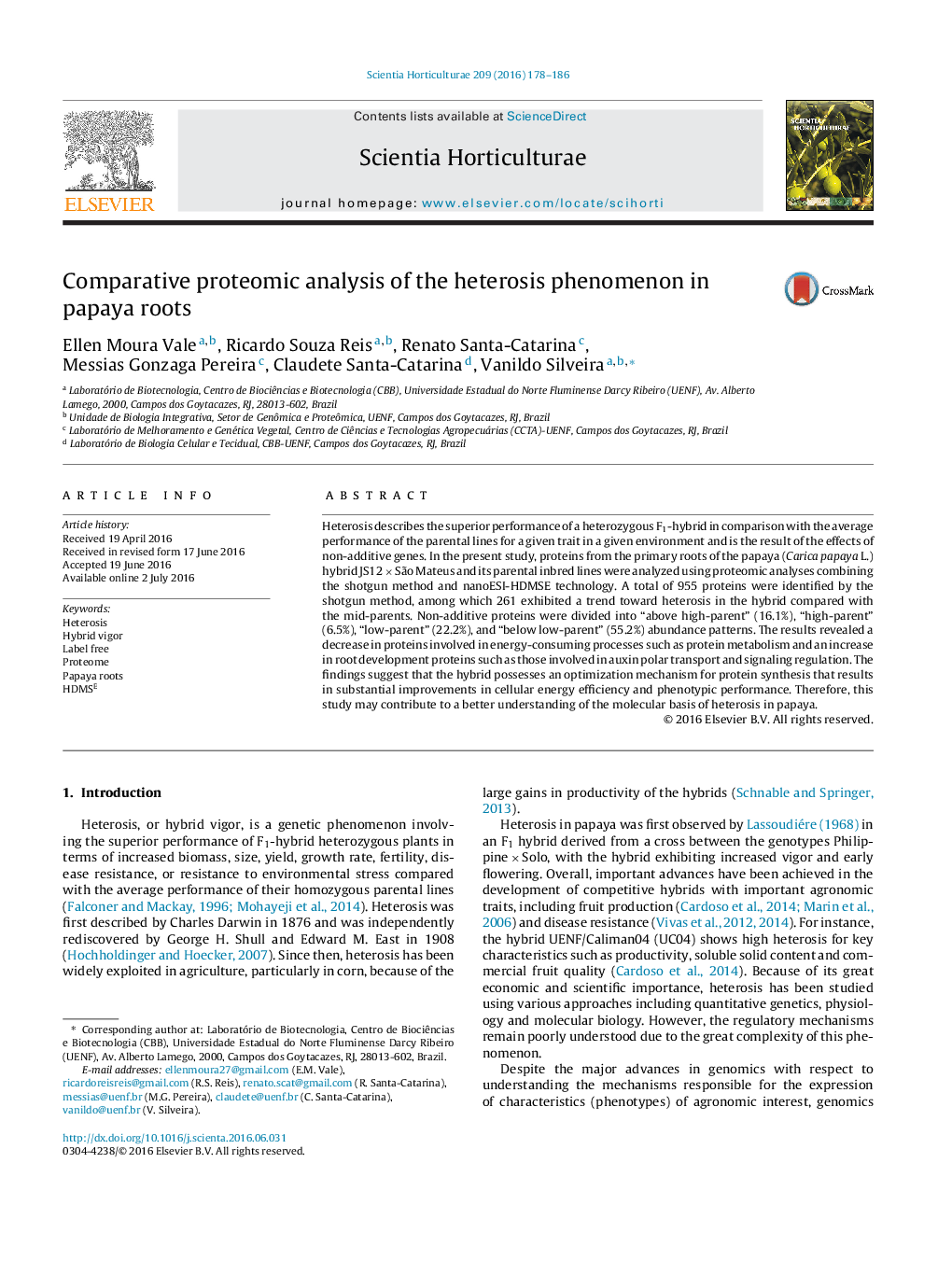| Article ID | Journal | Published Year | Pages | File Type |
|---|---|---|---|---|
| 4565967 | Scientia Horticulturae | 2016 | 9 Pages |
•The hybrid can optimize protein synthesis to improve energetic efficiency.•The hybrid has a greater capacity to produce stable proteins.•The hybrid has a greater ability to reduce the negative effects of the environment.
Heterosis describes the superior performance of a heterozygous F1-hybrid in comparison with the average performance of the parental lines for a given trait in a given environment and is the result of the effects of non-additive genes. In the present study, proteins from the primary roots of the papaya (Carica papaya L.) hybrid JS12 × São Mateus and its parental inbred lines were analyzed using proteomic analyses combining the shotgun method and nanoESI-HDMSE technology. A total of 955 proteins were identified by the shotgun method, among which 261 exhibited a trend toward heterosis in the hybrid compared with the mid-parents. Non-additive proteins were divided into “above high-parent” (16.1%), “high-parent” (6.5%), “low-parent” (22.2%), and “below low-parent” (55.2%) abundance patterns. The results revealed a decrease in proteins involved in energy-consuming processes such as protein metabolism and an increase in root development proteins such as those involved in auxin polar transport and signaling regulation. The findings suggest that the hybrid possesses an optimization mechanism for protein synthesis that results in substantial improvements in cellular energy efficiency and phenotypic performance. Therefore, this study may contribute to a better understanding of the molecular basis of heterosis in papaya.
Graphical abstractFigure optionsDownload full-size imageDownload as PowerPoint slide
